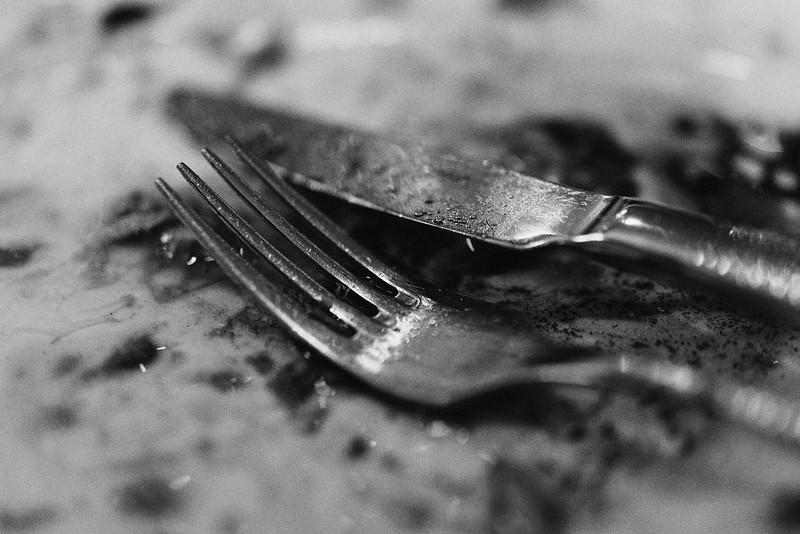Looking Right into the Abyss of the Mind:
a List of Mental Illness-Themed Book Recommendations
By Eve Volungeviciute
In my humble opinion, depicting various states of a human mind in fiction is a delicate matter, one that must be done with appropriate respect and integrity. That does not mean that it can’t go to some dark places of our psyche and really dig deep into what creates the demons we face. After all, it’s important to have all kinds of representation in today’s society, and books are a perfect way to achieve that.
For this particular list, I looked into different kinds of mental illnesses that are portrayed in fiction, such as depression, eating disorders, addiction, and more. I thought it would be interesting to have a variety of choices depending on the reader’s needs. I also picked different genres for the same purpose, as some of you might want a more suspenseful read while others would want something a bit lighter and closer to home. I believe that these books do justice to the sensitive topics they portray, even if sometimes they are quite brutal in doing so. Alright then – let’s dive into yet another pile of great literature!
Editor’s note: Some synopses may contain mild spoilers.

Photo credit: Visual Hunt
One Flew Over the Cuckoo’s Nest by Ken Kesey
One Flew Over the Cuckoo’s Nest has a history of being banned by American schools over time, which presumably, for some people, would only peak interest. This book doesn’t exactly discuss a specific mental illness of one individual, but rather the cruel and unfair ways the authorities dehumanise those who are suffering from those conditions.
The story is narrated by ‘Chief’ Bromden, one of the patients in a psychiatric hospital, and focuses on Randle Patrick McMurphy who fakes insanity to serve his prison sentence without having to do manual labour. The institution is controlled by the iron fist of Nurse Ratched, who, despite having complete authority seems to be lacking medical insight to her patients. With manipulation so subtle the patients don’t even realise they’re being controlled, her character could compete with some mastermind villains.
McMurphy makes it his mission to challenge Ratched’s ways throughout the book, which leads to some dire consequences for him. Subsequently, McMurphy’s character turns out to be a catalyst of sorts for the other residents at the hospital, making them realise they shouldn’t allow Ratched to take advantage of them. Overall, the novel has some interesting social commentary and, while certainly disturbing, it’s also a quite insightful read.
The Perks of Being a Wallflower by Stephen Chbosky
At first, this coming-of-age novel might seem like many of its companions on the shelves, telling a story about a boy who tries to fit in at school despite his introverted nature. Soon enough, however, we see that Charlie’s life is tainted with some deep-cutting events, such as the suicide of his only friend of the death of his aunt, which immediately paint a darker picture of the story.
Meanwhile, it’s not just Charlie who has inner demons to fight – pretty much every character in the novel is broken in a way, having endured some form of abuse, whether it was from their family or from a relationship. It’s interesting to learn how these characters deal with their pain and move forward, if not without a struggle at times.
Towards the end of the book there’s an uncomfortable, yet crucial, revelation about Charlie’s past which appears to break him mentally, but then the story sends a kind of a positive message that even after your darkest times, it is possible to pick yourself up and try to move past it. While The Perks of Being a Wallflower is targeted at a teenage audience, this book is read by all ages worldwide as its content is the kind that can profoundly affect most people in one way or another, reaching towards the classics section in the future.
Girl, Interrupted by Susanna Keysen
This one is slightly different from others on this list because it is a memoir in which Keysen reflects on her time in McLean Hospital. Susanna, the author and the protagonist, gets admitted for borderline personality disorder after a suicide attempt. She is told the stay will only be for a couple of weeks; however, it quickly turns into a period of eighteen months.
Throughout her stay, Susanna befriends some of the other patients in the hospital, who all have a range of reasons for their own admission. The novel contains a lot of debate of what sanity truly is, as well as questioning how doctors truly treat mental illness. It also does a good job at portraying Susanna’s depersonalisation and panic episodes, the writing style perfectly capturing what it feels like to lose one’s mind. It might not be a read for everyone, considering it’s based on real events; but, if anything, it’s good to think someone could go through that and still be a functioning adult today.

Photo credit: Visual Hunt
Wintergirls by Laurie Halsie Anderson
A chilling look into the crippling nature of eating disorders, Wintergirls tells a story of Lia, a girl suffering from anorexia. On top of her struggle with the disease, Lia’s also riddled with guilt over not picking up a call from her former best friend Cassie the night she died from bulimia. The novel dwells deep into Lia’s mind and the details of her illness, down to every last calorie count.
Relationships with her family are also tangled in difficulty as Lia goes to great lengths to fool them into thinking she’s getting better, only the readers aware of what’s truly happening behind the smile. As Cassie haunts Lia, her mental state seems to be getting progressively worse, which leads to a symbolic climax in the same place Cassie died. Most would call the ending bittersweet as it acknowledges what was lost, but also what could be again.
Wintergirls also has depictions of self-harm, which probably doesn’t make it a suitable read for everybody. Various critics have pointed out that, for some, the book can also be more harmful than helpful because of its in-depth descriptions of how an anorexic person’s brain works, which is a fair criticism of the book. However, read with caution, I believe it can serve as an educational read almost, letting others see why it’s so difficult for those suffering from eating disorders to break the cycle, and perhaps find different approaches to helping them.
The Yellow Wallpaper by Charlotte Perkins Gillman
Technically, this is only a short story, but I thought it’s too relevant for the topic not to include. The Yellow Wallpaper is about an unnamed woman who, after recently becoming a mother, has been suffering from what they used to call ‘temporary nervous depression’. Told not to engage in anything mentally stimulating and confined to an attic nursery, the narrator becomes obsessed with the yellow wallpaper in the room to some unhealthy levels.
The story has been analysed and interpreted in many different ways, but a recurring theme has been that of mistreatment of women and disregard towards their mental health at the time. While the piece is often viewed through a more socio-political or feminist lens, it’s all the more impactful when one realises how much struggling women had to face, from the patriarchal society that wanted to stuff them into a certain framework, in order to be taken seriously and receive appropriate care for their mental well-being. Taking into account this oppression women dealt with in past, and to a degree still face today, this type of fiction is important to bring into light.

Photo credit: Visual Hunt
The Virgin Suicides by Jeffrey Eugenides
This read might be a little different from the other ones on this list because it’s not exactly an ode to mental health or even an outright depiction of one. The Virgin Suicides follows the lives of the Lisbon family and is not afraid to start on a strong note, with the youngest daughter Cecilia trying to commit suicide, and eventually succeeding not far into the story. Afterwards, what was an already strict family turns into a total regime which only gets worse as the book goes on, with tragic consequences.
There are a few things about this book that set it apart from the rest. One of them is the narration style, which I haven’t stumbled upon in any other book yet. In any other case, the lack of a protagonist would’ve put me off, but it actually helps with what this story is trying to convey. Another thing more relevant to this article is that despite obvious undertones of depression and apathy the Lisbon girls experience, it’s never portrayed as a mental health issue that needs solving by outside forces. Such choice wasn’t out of ignorance regarding its subject matter, but a conscious narrative decision to frame their inert suffocating existence in a wry satire of sorts, showing how small-town communities live mundane, apathetic lives and they seem unable to deal with anything that shakes them out of the inertia.
When it comes to the depictions of the sisters, it’s not difficult to figure out what the motives for their tragic end are; their overbearing parents seem to be incapable of understanding that it’s their overly strict rules that have a detrimental effect on the girls, and it’s rotting in the house that’s slowly killing them on the inside. Regardless, the novel makes it clear that just as the narrators who obsess over the girls aren’t meant to know them, neither are the readers. It might leave some unsatisfied after finishing this book, but it can also ring true to life, as sometimes, unfortunately, there is no clear explanation for someone’s actions and there are many different faces of depression any of us can wear.
Sharp Objects by Gillian Flynn
Another sharp (pardon the pun) work from the author of Gone Girl. Sharp Objects is a murder mystery thriller which focuses on Camille, a murder case journalist who is forced to go back to her hometown after a girl is murdered there and another one goes missing. Throughout Camille’s time there, she stays in her family house with her estranged mother and stepfather, as well as her mischievous half-sister.
This is the kind of novel that grabs you in and doesn’t seem to want to let you go. Quite frankly, Camille is a dysfunctional mess – she’s an alcoholic with a history of self-harm, not to mention crippled by traumatic memories of her dead sister (the very heavily implied sexual assault is a mouldy cherry on a rotten cake). Despite seeing her make some questionable decisions throughout the novel, the reader can’t help but root for her and wish she could start a better life. As the murders turn out to be related to Camille’s family, she finds out things about her mother that she never thought possible, turning the investigation into a life and death matter for everyone involved.
Sharp Objects shows the nasty side of mental illness, highlighting that recovery is a hard battle that can sometimes last an entire lifetime. But the way I see it, it’s important to have this type of representation as well to show it’s not all sunshine and unicorns as soon as the book reaches its ending pages.

Photo credit: Visual Hunt
Veronika Decides to Die by Paulo Coelho
This novel deals with the classic theme of ‘you only appreciate something once it’s gone’. Veronika, the book’s protagonist, seems to have everything she could ever want; however, she plans to kill herself by pill overdose. Afterwards, she wakes up in a mental institution and is told said overdose triggered a heart condition that gives her only a few days to live.
During her stay, Veronika comes to realise that because of her new condition, she can do whatever she wants without worrying what others think of her, which allows her to start truly appreciating life and experiencing love. The book also discusses questions of madness and how the world perceives it.
Without spoiling the plot too much, towards the end of the book, we find out something that changes the perspective of the events and makes one think – do we really have to believe we’re dying to start living? While one could say it’s quite a controversial question and it certainly wouldn’t work for everyone, it does for this story and is an interesting take on the topic. All in all, this makes for a fairly captivating read.

Photo credit: Visual Hunt
Clean by Juno Dawson
This young adult fiction deals with the theme of addiction. It starts off with Lexi, a popular socialite, being forcefully admitted to a secluded rehab after almost overdosing on heroin. While the building looks like a palace, it’s still a prison for her and her fellow patients, all fighting their own battles.
While Lexi does show traits of an entitled spoiled brat, she’s also a surprisingly compelling character. The descriptions of her detoxing, as well as her fight not to relapse, are very detailed and realistic, showing the ugly nature of the way an addict’s mind and body work. The book is structured in a ten-step program, showcasing every step of Lexi’s journey in a separate chapter, making the story feel like constant progress, even with a possible slip-up always in the picture. It’s also important to note that other characters are suffering from different types of addiction, which makes one question if even the seemingly harmless things can become deadly to you if used unwisely.
Clean might not be for everyone because of its explicit content, and for its focus on romance for a portion of the narrative, but overall, it is an enticing story worth a check out at least.
Am I Normal Yet? By Holly Bourne
This book actually shook me to my core. Evie is trying hard to be normal and a new school is a good way to make a fresh start. However, we soon find out she suffers from bad OCD and anxiety, which make navigating said life increasingly difficult.
The details of Evie’s mental state are described in an extremely rich, and occasionally a disturbing way, creeping under the reader’s skin and making them question everything themselves. Holly Bourne manages to capture the desire for a teenage girl to be like everyone else but feeling trapped in her own brain, which sometimes can be a terrible place to be. As with Clean, Am I Normal Yet has quite a big focus on romance, however, it’s what the protagonist is longing for and, when you think about it, it’s a completely normal desire for a young girl to want to experience romantic love for the first time without the limitations of her mind.
While the book is aimed at a younger audience, it could definitely suffice as a read for most ages since I can safely say it’s one of the most captivating books about mental illness I have ever come across. I have yet to find another read that hits the right note in the same way.
